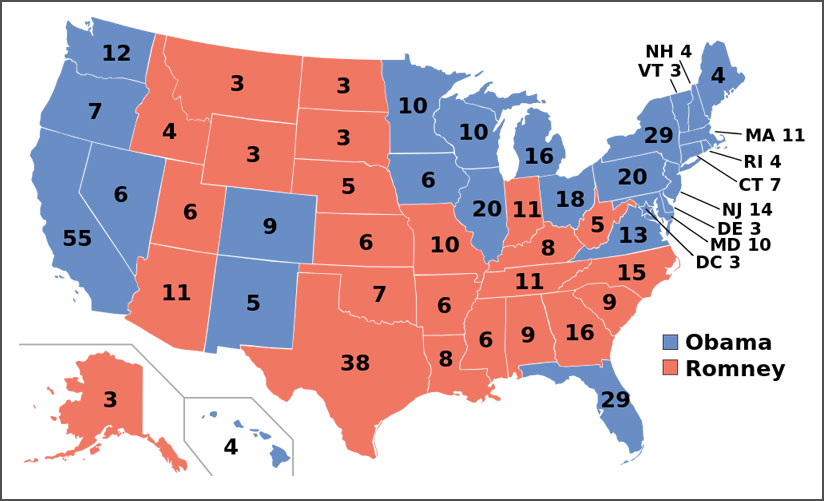Social Studies
When first discussing how the President of the United States would be selected, the writers of the Constitution found themselves once again in disagreement. Some believed that the president should be selected by popular vote, while others thought that Congress should choose the president. The Electoral College was the compromise they finally agreed upon. The electors, who choose the president and vice president, are elected by popular vote in all the states and the District of Columbia. The Electoral College consists of 538 electors (one for each of the 435 members of the House of Representatives and 100 Senators; and 3 for the District of Columbia.) Each state's allotment of electors is equal to the number of House members to which it is entitled plus two Senators. The census is used to reapportion the number of electors allocated among the states.
So on election day, citizens go to the polls to vote for the candidate of their choice, right? Not exactly. Voters do not cast their votes directly for the president and vice president. Instead, the popular votes (votes cast by the general public) are cast for slates of electors who are pledged to the candidates for whom people wish to vote. Candidates who receive a plurality (or most) of the popular votes receive all of that state's electoral votes. For this reason, a close national popular vote may still result in one candidate's winning a large majority of the electoral votes.
If no presidential candidate wins a majority of electoral votes, the 12th Amendment to the Constitution provides for the presidential election to be decided by the House of Representatives. The House would select the President by majority vote, choosing from the three candidates who received the greatest number of electoral votes. Only twice in the history of the U.S. did the House of Representatives choose the President - Thomas Jefferson's election in 1801 and John Quincy Adams' election in 1825.
The Electoral College has been criticized for three primary reasons:
- A candidate can win the election even if he or she does not win the popular vote.
- A state's electoral votes do not have to reflect its popular vote.
- A strong bid by a third-party or independent candidate could mean that neither major party candidate receives the majority of the electoral votes. In such a case, the House of Representatives - instead of the people through their electors - would decide the election.
Although there have been suggestions for revising or eliminating the electoral college to address the criticisms that have been voiced, elections are still decided by electoral votes. While criticisms of the electoral college are clearly stated, the original reasons for establishing it are not. Some positive aspects include the following:
- It gives smaller states more power in the election process.
- It allows for candidates to win without having a majority of the votes, thus reducing election confusion.
- It provides a safety valve for situations of national confusion.
- It provides a safety valve for situations of national crisis in which inappropriate and dangerous candidates might be elected.
Electoral college map for the 2012 United States presidential election.

Wisconsin, Colorado, Florida, Iowa, New Hampshire, Ohio, and Virginia were considered battleground states. Why would those who are in favor of a national popular vote and are opposed to the continued use of the electoral college argue about swing states? Select all that apply.
- There is no reason for a state to be considered a swing state. They are arbitrarily selected.
- The swing states have a great deal of power in determining elections.
- Because swing states are so important, they receive the largest campaign attention.
- The states are too far apart and make it difficult for candidates promote their causes.




